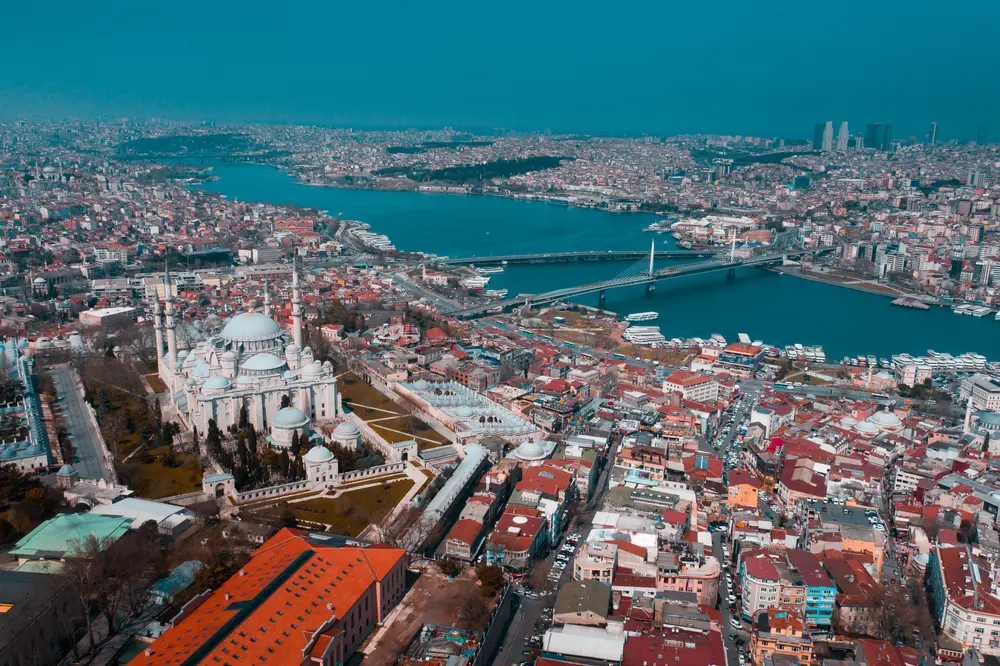Istanbul, a city where East meets West, invites you to embark on a journey through its captivating UNESCO Heritage Sites. Unveil the secrets of centuries-old wonders, as we guide you through the rich tapestry of history that defines this mesmerizing destination. Join us as we delve into the heart of Istanbul, where each cobblestone tells a story, and every UNESCO site beckons tourists to embrace the magic of the past. Let’s make history together – Istanbul’s UNESCO treasures await your eager footsteps!

The Sultanahmet Urban Archaeological Component Area encompasses several significant landmarks, including the former hippodrome of Constantinople, Hagia Sophia, Hagia Eirene, Little Hagia Sophia Mosque, and Topkapı Palace.
The Hippodrome, now Sultanahmet Square, originated in 203 under Byzantine Emperor Septimius Severus for sports and social events. Although renewed and expanded by Constantine in 324, only a few remnants remain from the original structure.
Hagia Sophia, initially constructed by Byzantine Emperor Justinian I between 532 and 537, has served various purposes, from a Greek Orthodox Christian church to a mosque after the conquest of Istanbul in 1453. Converted into a museum in 1935, it boasts a renowned massive dome and stands as a crucial example of Byzantine architecture.
Hagia Eirene, located within the walls of Topkapı Palace, dates back to the fourth century and was initially a Greek Orthodox Church. Damaged by an earthquake and subsequently repaired during Emperor Constantine V’s reign, the structure resembles a typical Roman basilica, divided by corners and columns.
The Little Hagia Sophia Mosque, originating as a Byzantine Orthodox Church in 536, transformed into a mosque in 1497 during Bayezid II’s rule. Surrounding the mosque is a small garden, an ablution fountain, and Ottoman-era additions such as shops and a portico.
Topkapı Palace repurposed as a museum in 1924 after the dissolution of the Ottoman Empire, showcases a rich collection of Ottoman artifacts. Exhibits include porcelain items, arts, dresses, weapons, shields, armor, Ottoman miniatures, Islamic calligraphic manuscripts, murals, and an extensive display of Ottoman treasures and jewels.

Mimar Sinan erected Süleymaniye Mosque under the patronage of Suleiman I, also known as Suleiman the Magnificent. This mosque stands as a pinnacle of Ottoman architectural achievement. The choice of four minarets symbolizes Suleiman the Magnificent being the fourth sultan post the conquest of Istanbul, while the ten balconies reflect his position as the 10th Ottoman sultan.
Süleymaniye Mosque was conceived as a complex catering to both the city’s religious and cultural needs. Alongside the mosque, the complex features a hospital, a bathhouse, a caravanserai, four madrasahs, a specialized school for hadith education, a medical school, and an almshouse. Many of these structures endure to this day.
Originally known as the Monastery of the Pantocrator, Zeyrek Mosque holds significance with its three orthodox churches. Constructed in 1124 by Empress Eirene Komnena, the wife of Byzantine Emperor Ioannes Komnenos, this mosque in the Fatih district served as a monastery, library, and hospital. The monastery stands as a prime example of Byzantine medieval architecture.
Following the conquest of Istanbul, the monastery underwent a transformation into a madrasah. The mosque and its vicinity are named after Molla Mehmet Efendi, affectionately called “Zeyrek,” who served as one of the teachers in the madrasah during that period.
Stretching along the western border of the historical peninsula, this area encompasses the city walls and their surroundings, extending from the Marmara Sea in the south to the Golden Horn in the north. The stone walls, known as the land walls, serve as a crucial historical and architectural landmark in Istanbul, offering protection and encapsulating the city’s rich history.
Initiated by Constantine the Great in the fourth century, the construction of these walls witnessed multiple additions and alterations over the course of history. The magnificent gates within the walls stand as monumental testaments to the state’s power, especially for those arriving in the city for the first time. Notably, gates such as Yedikule, Belgrade, Silivri, Mevlana, Topkapı, Sulukule, Edirnekapı, and Eğrikapı, originally constructed as symbols of strength, continue to be used today.